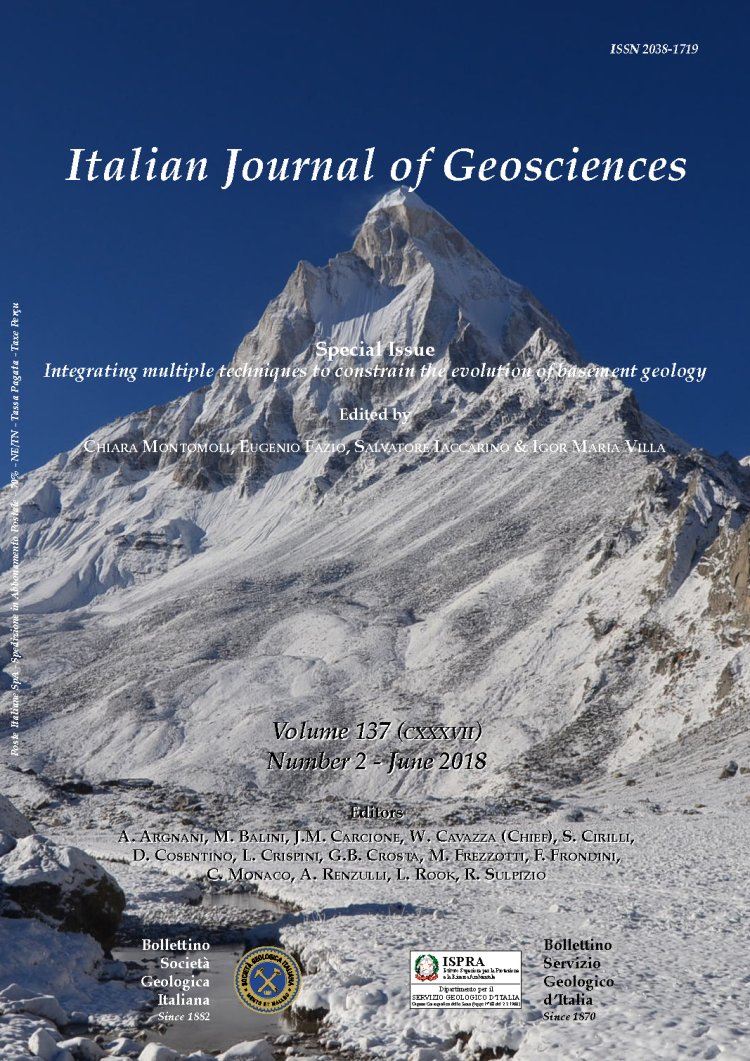
The Variscan evolution in basement cobbles of the Permian Ponteranica Formation by microstructural and petrologic analysis
Davide Zanoni (1) & Maria Iole Spalla (1)
(1) Università degli Studi di Milano, Dipartimento di Scienze della Terra “A. Desio”, via Mangiagalli 34, 20133 Milano, Italy.
Corresponding author e-mail: davide.zanoni@unimi.it.
Volume: 137 (2018) f.2
Pages: 254-271
Abstract
This work reconstructs the metamorphic evolution recorded in the cobbles of the Ponteranica Formation to be compared with the evolutions of the basements of the central Southern Alps and of the clasts of Aga and Vedello and Dosso dei Galli conglomerates. The Ponteranica Formation is part of the lower volcano-sedimentary cycle of the Permian sequences of the western Orobic basin. These sequences
cap the Variscan basement in which different tectono-metamorphic units were recognized and contoured. We sampled all the crystalline rock types preserved as clasts such as different types of metapelites, meta-intrusives, granitoids, and tourmalinites and reconstructed the relative chronology of the superposed equilibrium assemblages. Only for metapelitic rocks the PT paths were reconstructed on the ground of mineral chemical analyses and geothermobarometry. The cobbles of the Pontereanica Formation record two types of metamorphic evolution. In Type 1 cobbles, the M1 metamorphic assemblage is
characterised by white mica, biotite, garnet, staurolite, ± kyanite and is interpreted as the result of the record of the Variscan collision. This assemblage is followed by M2 assemblage characterised by white mica, chlorite, ± biotite that represents the Variscan exhumation. In type 2 cobbles, relict andalusite and possible cordierite characterise the pre-M2 metamorphic re-equilibration that developed under a high
thermal regime. The PT paths recorded in cobbles are consistent with the tectono-metamorphic evolutions recorded in the basement units suggesting that during the deposition of conglomerates, the type of tectono-metamorphic units exposed to erosion were equivalent to that presently exposed in the Orobic Alps. The evolution of type 1 cobbles is similar to the evolution recorded in the clasts of Aga and Vedello
conglomerates, whereas the clasts of Dosso dei Galli Conglomerate recorded only the effects of the Variscan tectonic burial. The occurrence of tourmalinite cobbles may imply an age up to Upper Permian / Lower Triassic for the Ponteranica Formation. In this view, the age of the Permian conglomerates of central Southalpine decreases westward with the increase of the thermal maturity of the
metamorphic imprints recorded in clasts. These observations are consistent with a westward migration of the extensional tectonics responsible for the basin opening.
Keywords
Get Full Text